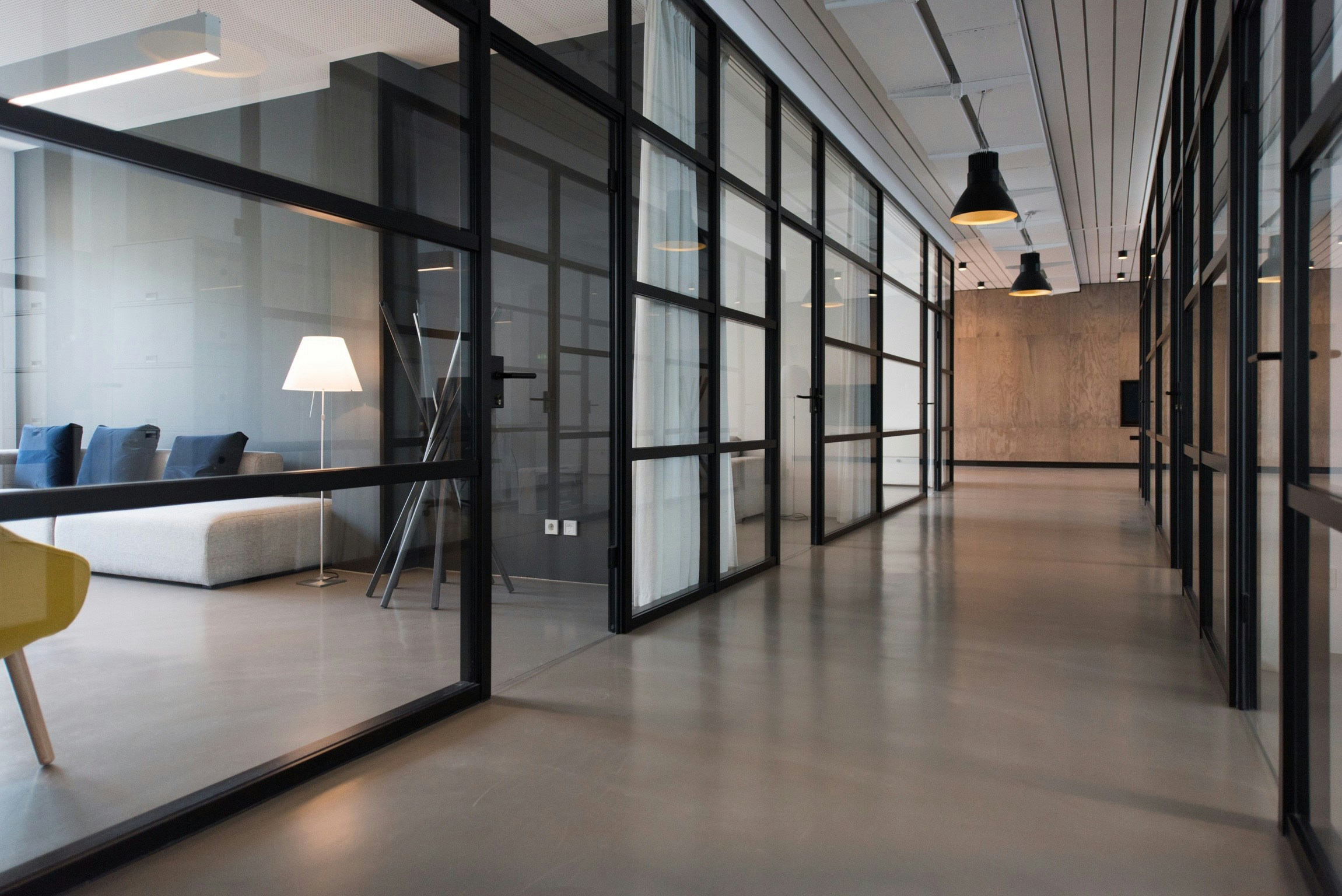It’s long been acknowledged that there is no one-size fits all approach to workplace design, yet human behaviour and performance is known to be affected by the interaction between the person and the environment in which they carry out their daily activities. Recently, more attention has been given to creating environments that support overall wellbeing, considering the full range of neurodiversity among employees.
With increased awareness of neurodiversity, which includes the neurological variations in all brains, it’s understood that everyone has unique sensory thresholds, processing styles, and preferences. For neurodivergent individuals, these differences can result in being overly sensitive or under-sensitive to sensory aspects of the environment, or even becoming overloaded by sensory input. Therefore, organizations must thoughtfully consider the sensory impact of workplace design to accommodate all employees.
There is variation in people’s attributes and experiences across all populations. Neurodivergent people, such as those identified with ADHD, dyslexia, dyspraxia, autism, or recognised sensory processing differences, may experience the world in ways that differ from the majority of people. Understanding these differences is key to understanding neurodivergence and how this influences differences in how neurodivergent people process and make sense of information and experience this in our daily lives.
People’s experiences of neurodivergence differ for every individual, and it is common for neurodivergent people to have more than one identified form of neurodivergence as they overlap and often go together. For example, it is thought that around 40% of autistic people also present with features of ADHD. Approximately 15-20 percent of people are neurodivergent, e.g. have at least one form of neurodivergence, such autism, ADHD, dyspraxia or dyslexia.
In the UK, for instance, around 1 in 100 individuals are identified as autistic, although the true number is estimated to be much higher as many people may not have received a formal diagnosis as there are currently challenges to accessing assessments that formally identify autism and ADHD.
It is common for neurodivergent people to experience heightened sensitivity to certain sensory aspects of the environment, such as experiencing heightened sensitivity to visual stimuli, including bright lights, which is often as a result of having over activity in the areas of the brain that are responsible for visual processing. In workplace settings, the amount and intensity of certain lighting conditions can contribute to sensory overload or be uncomfortable for the individual, which can lead to increased processing demands, distraction, distress and even anxiety. Conversely, well-designed lighting environments can mitigate these challenges, fostering spaces conducive to focus, calmness, and engagement.
To enhance workplaces for neurodivergent employees, consider the following:
Most typical offices are not neurodivergent-friendly environments. Fluorescent lights, kitchen smells, background noise, interruptions, expectations of small talk, and uncomfortable clothing can overwhelm neurodivergent individuals, especially when these factors are uncontrollable.
Virtual work offers a valuable alternative, allowing individuals to control their sensory environment by choosing a preferred workspace, often within their own home.
Some colleagues may prefer to join meetings with their cameras off or engage in face-to-face conversations rather than virtual ones. Clear guidance and expectations for virtual meetings are essential.
Everyone processes sensory information differently, and neurodivergent individuals may be hypersensitive or hyposensitive to light. This can make certain colors or light intensities overwhelming, uncomfortable, distracting, or even painful, ultimately impacting their functioning and wellbeing.
Did you know that 70% of all the sensory receptors in our bodies are in our eyes?
Lighting is essential to our mood, productivity, and well-being, and its impact is even more significant for neurodivergent individuals, whose sensory experiences differ from the neurotypical norm. Optimizing lighting environments can enhance comfort, functionality, and quality of life for everyone. Recognizing and accommodating sensory processing differences in lighting design is crucial for creating functional and inclusive spaces.
Key considerations:
- Recognise that traditional office environments may overwhelm or distract individuals, hindering their productivity.
- Engage with neurodivergent colleagues to understand how their environment impacts them and what adjustments could improve their experience.
- Acknowledge and respect that we all process sensory inputs and temperature differently and have different thresholds for what we can tolerate and what helps us settle and feel regulated.
- Implement lighting designs that minimize glare or shadows, which is a common source of distraction and sometimes discomfort for some individuals.
- Leverage smart lighting systems to offer personalized control and customization, accommodating a range of sensory preferences.
- Incorporate natural and artificial lighting choices that align with individuals’ preferences and sensory profiles.
- Provide flexibility and controllability in lighting systems to empower individuals to tailor their environment according to their comfort and activities.
- Recognize the profound impact of lighting on wellbeing in educational and work settings, and design accordingly to enhance focus, productivity, and job satisfaction.
- Offer sensory breaks so that individuals can have space to regulate themselves from a sensory perspective or create designated areas in the workplace that are quiet and offer adjustable lighting.
Sensory spaces – Centering interior design on the different senses
Studies show that glare significantly impacts concentration and visual comfort, with up to 40% of office workers reporting discomfort due to glare in typical office settings. For neurodivergent individuals, this discomfort can be even more pronounced, and can affect ability to focus and increase stress levels. Implementing lighting fixtures with anti-glare properties and utilising diffusers or shades can effectively mitigate this issue, promoting a visually comfortable environment.
Designing with diversity in mind
Technological advances have brought about smart lighting systems that allow for greater control and customization. These systems let individuals tailor lighting to their sensory preferences, creating environments suited to various activities. Well-designed lighting promotes wellbeing, positive emotions, and enhances a space’s aesthetic. Incorporating biophilic design elements can enrich environments, fostering a connection with nature and improving mental wellbeing.
Tips for managing lighting factors which can affect different people differently:
Glare:
- Glare from harsh lighting can be particularly problematic for neurodivergent individuals and may cause irritation, discomfort, and visual stress, which can lead to difficulties in focusing and processing information.
- Glare can be minimised by using anti-glare coatings on screens and windows, choosing lighting fixtures that diffuse light, and having adjustable blinds or curtains that can also help control natural light.
Brightness
- Overly bright lighting can be overwhelming for individuals with sensory sensitivities. It may contribute to feelings of discomfort, anxiety, or sensory overload.
- Opting for adjustable lighting options, such as dimmer switches or lamps with variable brightness settings, can enable individual control over lighting and allow people to adjust brightness to suit their own preference and optimum lighting requirements for various activities.
Hue and Colour Temperature
- Different colour temperatures and hues affect individuals differently. Neurodivergent people may be sensitive to specific colours, while others may find certain hues calming or distressing.
- Experimenting with different colour temperatures can help individuals identify what works better for them and it can be helpful to choose lighting with warmer tones in spaces that multiple people use. Personalised lighting preferences do vary, so allowing individuals to choose their preferred lighting where possible is ideal.
Fluorescent Lighting:
- Fluorescent lights can flicker and the colour temperature may be uncomfortable for some individuals, leading to headaches, eye strain, and/or sensory discomfort.
- Using alternative lighting sources such as LED lights, which are often more energy-efficient, means these can be adjusted to softer tones.
- Providing adequate task lighting that is adjustable and focused for specific activities, can help individuals maintain focus and reduce eye strain. Natural lighting can also be a good option.
Task Lighting:
- Insufficient or uneven lighting can affect concentration and task performance, especially for those with attention-related differences, such as ADHD.
- Thinking about each person’s lighting needs for specific tasks is important.
Routine and Predictability:
- Establishing a consistent lighting routine can be important for neurodivergent individuals who may benefit from a predictable environment.
- Lighting can be an important external signal or cue that indicates parts of a routine or transition (e.g. turning lights off at bedtime)
- Maintaining a consistent lighting schedule with certain levels of lighting at certain times of day can be helpful, especially in environments where individuals spend significant time.
- Using visual cues or timers to signal changes in lighting, when necessary, can also help people understand why lighting might change and vary in the same space.
A competitive advantage
Investing in lighting solutions that prioritise comfort, flexibility, and personalisation not only benefits neurodivergent individuals but also enriches the experiences of all occupants, fostering environments that are responsive to diversity in sensory processing and preferences and ultimately empower everyone to thrive.
Equip your managers to better understand neurodivergent experiences
Creating a culture that recognises and celebrates that all our brains are unique and bring different strengths, challenges and preferences to our teams and workplaces is an essential part of embracing neurodiversity and benefits all.









